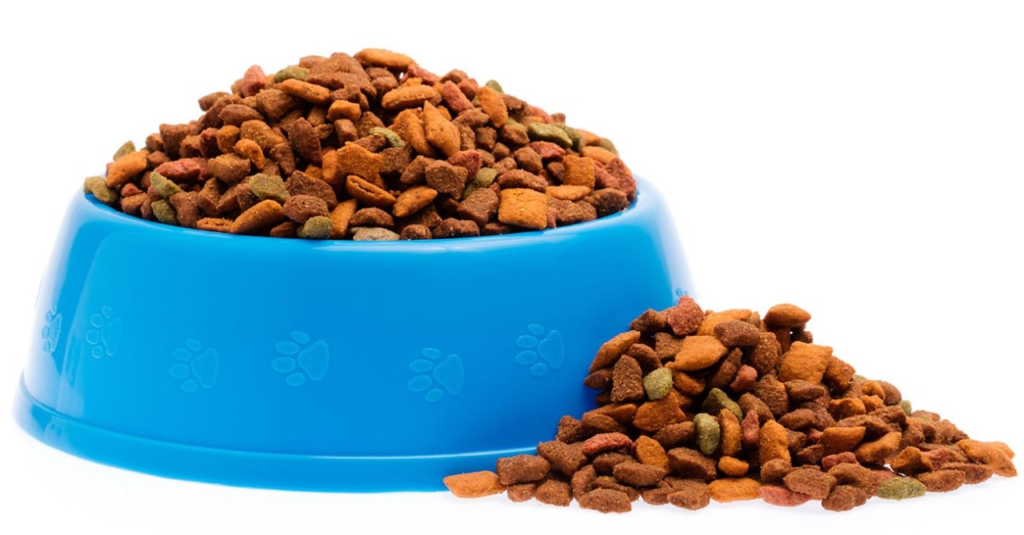
Gravy Train Dog Food is a brand that has been a staple in the pet food industry for decades, recognized for its affordability and unique feature of turning kibble into a gravy-like consistency when mixed with water. Initially launched in the 1950s, Gravy Train has been marketed as a convenient, budget-friendly option for dog owners, offering a dog food that provides a two-in-one benefit: a dry kibble option that can easily be transformed into a more flavorful and palatable meal for dogs.
In this article, we will delve into the key features of Gravy Train dog food, the ingredients used, the pros and cons of feeding it to your dog, and alternatives that may provide higher nutritional value.
History of Gravy Train Dog Food
Gravy Train was first introduced by the General Foods Corporation in 1959, and it was one of the first dog foods to market itself with the distinctive feature of creating a gravy when mixed with warm water. The brand was designed to appeal to pet owners who wanted to give their dogs a more flavorful meal, combining the convenience of dry kibble with the taste and texture of gravy, which many dogs find more appetizing.
Since then, Gravy Train has been acquired by various companies, including Del Monte Foods, which later became Big Heart Pet Brands. Currently, Gravy Train is owned by J.M. Smucker Company, which acquired Big Heart Pet Brands in 2015. Despite changes in ownership, the core concept of the product—dry kibble that turns into gravy when water is added—has remained the same, ensuring its continued presence on store shelves.
Key Features of Gravy Train Dog Food
- Gravy-Creating Feature: The unique selling point of Gravy Train dog food is its ability to create a savory gravy when mixed with warm water. This feature enhances the palatability of the food, making it appealing to dogs that may be picky eaters or those who prefer a wetter, more flavorful meal. The gravy helps to soften the kibble, making it easier to chew for older dogs or dogs with dental issues.
- Affordability: One of the most significant advantages of Gravy Train is its low price point. It is widely available in supermarkets, discount stores, and online, making it accessible to dog owners on a budget. This affordability has made it a popular choice among families looking for an economical option to feed their pets.
- Convenience: Gravy Train offers the convenience of a dry kibble that can also function as a wet food. Dog owners can serve it as dry kibble for a quick meal or add water to make a more luxurious, gravy-covered dish. This versatility appeals to owners who want to give their dog some variety without switching between different types of food.
- Variety of Flavors: Gravy Train offers several different flavors, including beef, chicken, and bacon, catering to different taste preferences of dogs. The variety of flavors allows pet owners to rotate between options to prevent their dog from becoming bored with a single type of food.
Ingredients in Gravy Train Dog Food
While Gravy Train’s affordability and unique gravy feature are appealing, a closer look at the ingredients reveals some concerns, particularly when compared to higher-quality dog foods. Here is an overview of the key ingredients commonly found in Gravy Train dog food:
- Meat By-Products: Gravy Train uses meat by-products as one of its primary protein sources. Meat by-products are the leftover parts of animals that are not used for human consumption, such as organs, bones, and connective tissue. While these by-products do provide some nutritional value, they are generally considered lower quality than whole meats or named meat meals like “chicken meal” or “beef meal.”
- Soybean Meal: Soybean meal is a plant-based protein source used in many lower-cost dog foods as a filler to increase the overall protein content. While it is not harmful to dogs, it is not as nutritionally rich as animal-based proteins. Dogs are omnivores but thrive on diets that are rich in animal proteins, which are more bioavailable to them.
- Corn and Wheat: Gravy Train also includes corn and wheat as primary carbohydrate sources. These ingredients are used as inexpensive fillers in many pet foods. While they provide energy, they offer little nutritional value and can be difficult for some dogs to digest. Corn and wheat are also common allergens for dogs, which can cause issues for pets with food sensitivities.
- Artificial Additives: Gravy Train contains artificial flavors and colors to make the food more appealing to both dogs and their owners. However, these additives offer no nutritional benefit and can be problematic for dogs with sensitivities or allergies to artificial ingredients.
- Preservatives: Like many lower-priced dog foods, Gravy Train uses preservatives such as BHA (Butylated Hydroxyanisole) to extend the shelf life of the product. BHA has been controversial in the pet food industry because some studies suggest it may be carcinogenic with long-term use, although it is still approved for use in small quantities.
Pros of Gravy Train Dog Food
- Budget-Friendly: Gravy Train is an economical choice, making it affordable for pet owners on tight budgets.
- Widely Available: The product is easy to find in grocery stores, big-box retailers, and online, making it accessible to most consumers.
- Gravy Feature: The ability to add water to create a gravy-like texture can make meals more enjoyable for dogs, especially picky eaters or those who prefer moist food.
- Flavor Options: The variety of flavors allows dog owners to switch between different options to maintain their dog’s interest in the food.
Cons of Gravy Train Dog Food
- Low-Quality Ingredients: The use of meat by-products, corn, wheat, and soybean meal as primary ingredients raises concerns about the overall nutritional quality of Gravy Train. These ingredients are less digestible and less nutritious compared to whole meats, named meat meals, and higher-quality carbohydrate sources.
- Artificial Additives: The presence of artificial flavors, colors, and preservatives such as BHA may be a concern for health-conscious pet owners. Long-term exposure to artificial additives is generally not recommended for optimal canine health.
- Limited Nutritional Value: Gravy Train’s formulas do not offer the same level of balanced nutrition as higher-end dog foods that use real meat, high-quality grains, and fruits or vegetables. Dogs on a Gravy Train diet may not be receiving all the essential nutrients they need to thrive, especially if they are highly active or have specific health needs.
- Potential for Allergens: With common allergens like corn, wheat, and soy, Gravy Train may not be suitable for dogs with sensitivities or allergies. Dogs prone to food allergies may experience digestive issues, skin irritation, or other health problems on this food.

Alternatives to Gravy Train Dog Food
For pet owners who are looking for more nutritious, high-quality dog food but still want to remain within a reasonable budget, there are several alternatives that offer better ingredients and nutritional value:
- Blue Buffalo Life Protection Formula: Blue Buffalo offers a range of dog foods that use high-quality protein sources like deboned chicken and include healthy grains like brown rice and oatmeal. Their foods are free from corn, wheat, and soy, and they contain no artificial additives.
- Taste of the Wild: Taste of the Wild is a premium dog food brand that uses novel protein sources such as bison, venison, and salmon. Their formulas are grain-free and rich in real meat, fruits, and vegetables.
- Wellness CORE: Wellness CORE provides grain-free, high-protein dog foods made with real meats and no artificial additives. This brand is a good option for pet owners seeking a nutrient-dense, high-quality product.
- Nutro Wholesome Essentials: Nutro offers affordable yet nutritious dog foods made with real meat as the first ingredient. Their formulas are free from artificial colors, flavors, and preservatives, making them a healthier choice compared to Gravy Train.
Homemade Dog Food: A Natural Alternative
For those concerned about the quality of store-bought dog food, making homemade dog food can be an excellent way to ensure that your dog gets fresh, high-quality ingredients. A basic recipe for homemade dog food might include:
- Lean ground turkey or chicken as the protein source
- Cooked brown rice or sweet potatoes as the carbohydrate source
- Vegetables like carrots, peas, and spinach for added nutrients
- Fish oil or flaxseed oil for healthy omega-3 fatty acids
For pet owners seeking more nutritious and balanced dog food, there are several higher-quality alternatives available that provide better nutrition without breaking the bank. Additionally, by making dog food at home, pet owners can control the ingredients, ensuring their dog receives wholesome, nutritious meals without unnecessary fillers or additives.



